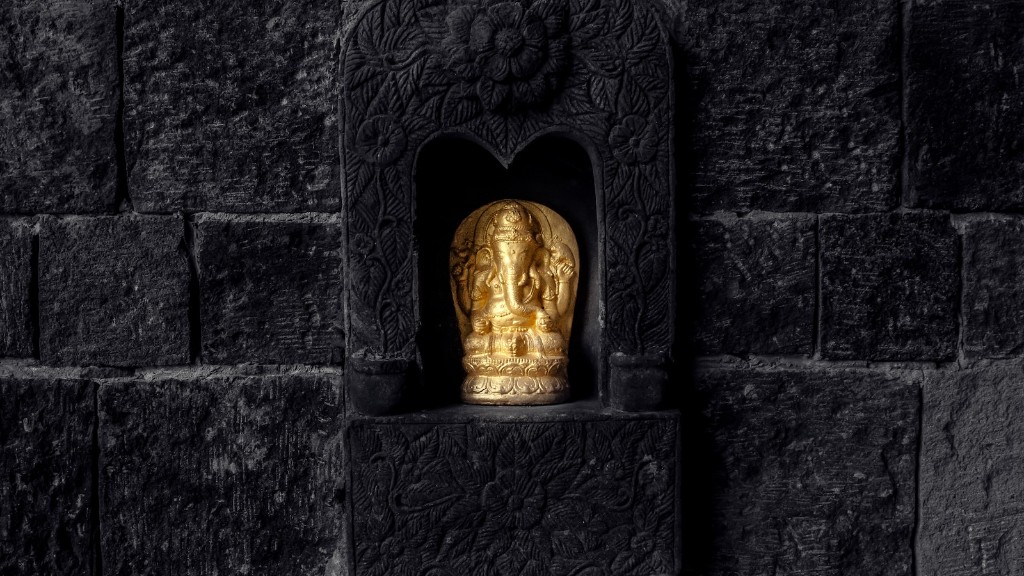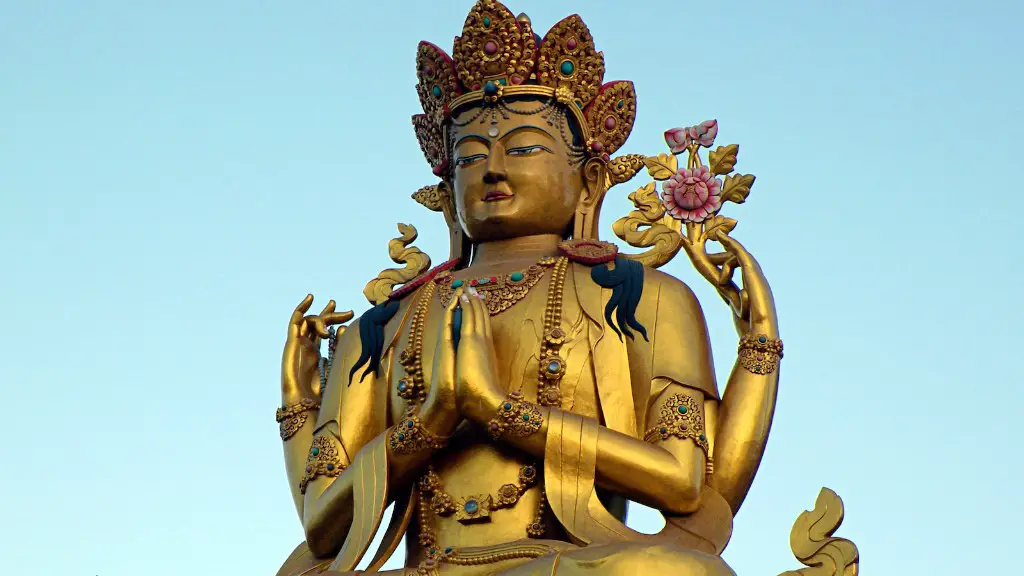Mantras are sacred utterances in Buddhism. They are typically chanted as a means of invoking certain Buddhas or bodhisattvas, or as a tool for meditative practices. In some cases, mantras may also be recited as a form of prayer or visualization. While the word mantra is derived from the Sanskrit language, mantras are used in all major Buddhist traditions.
A mantra is a word, phrase, or syllable that is repeated as a part of meditation. Mantras are often used in Buddhism as a tool to focus the mind. The use of mantras is a common practice in many other religions and spiritual traditions as well.
What are the three Buddhist mantras?
Buddhist mantras are sacred words or phrases that are used as a tool to focus the mind during meditation. The repetition of a mantra can help to still the mind and bring about a state of deep relaxation. There are many different mantras used in Buddhism, each with its own specific purpose. Some of the most popular mantras include the Shakyamuni Mantra, the Avalokitesvara Mantra, and the Amitabha Mantra.
The mantra of Avalokiteshvara is one of the most well-known and widely used mantras in Buddhism. The mantra itself contains the words “Om mani padme hum” which, when translated, mean “Behold! The jewel in the lotus!”. The mantra is used as a tool for meditation and prayer, and is often chanted during religious ceremonies and rituals. The use of the prayer wheel is also common among Buddhists, which is spun around as a means of reciting the mantra.
What is the most powerful mantra in Buddhism
This six-syllable mantra is associated with the four-armed Shadakshari form of Avalokiteshvara, the bodhisattva of compassion. The mantra is meant to invoke the blessings of Avalokiteshvara and can be chanted for protection, healing, and general well-being.
Mantras are a powerful tool that can be used to bring the mind greater compassion, better clarity or deeper understanding. In Buddhist practice, mantras are often used to help practitioners develop a more positive outlook and to cultivate positive qualities such as compassion and wisdom. While mantras can be extremely helpful, it is important to remember that they are only a tool and that ultimately it is up to the individual to put in the work to develop these qualities.
What is an example of a mantra?
Some examples of mantras that can be used to promote calmness, presence and peace are:
“I am calm.”
“I am present in this moment.”
“I am at peace.”
“I am conquering my fears.”
A mantra is a word or phrase that has meaning for you. This meditation consists of five mantras, each of which you repeat for one minute. The five words are: Release; Peace; Tranquility; Love; and Joy.
What are the 7 mantras?
The bija mantras, or one-syllable seed sounds, are a powerful tool to stimulate and unblock the chakras. Respectively, each sound aligns with the seven major energy centers: Muladhara, Svadistana, Manipura, Anahata, Visshudha, Ajna, and Sahasrara. By chanting these mantras, we can cleanse and balance our chakras, leading to a more harmonious and healthy state of being.
A mantra is a sacred message or text that can be used as a charm or spell. The Indian spiritual leader Sri Sathya Baba said that a pure thought from a pure heart is better than a mantra. This means that while a mantra can be helpful, pure intentions and genuine kindness are more important.
How do I find my personal mantra
A mantra is a tool that can be used to help focus and calm the mind. It is important to find a mantra that works for you and that you can connect with. Sometimes the best way to find your mantra is to ask yourself what it is you need. Let the deficit guide you instead of being a weakness but don’t become too attached to one mantra you think is right. It’s important to try new mantras on and see how they fit. You may be surprised.
This mantra is a chant for good health and compassion and is to be used when you have positive feelings and intentions for someone else’s wellbeing.
What is the main Buddhist prayer?
Namo Amida Buddha,
You are the source of happiness and goodness, and you guide us to the liberating path. Thank you for your compassion and wisdom. May we all find inner peace and enlightenment.
The Compassion of Buddha is a powerful mantra that is said to calm fears, soothe concerns, and even mend broken hearts. The mantra goes “Om Mani Padme Hum” which translates to “hail to the jewel in the lotus”. This mantra is a reminder that we all have the potential for greatness and that we should strive to be our best selves.
Do Buddhist mantras work
Buddhist mantras are a great way to focus and calm the mind during meditation. They can be used in conjunction with other Buddhist meditation practices, or on their own. Either way, they can help to improve your meditation practice and create a more peaceful and centered state of mind.
There is no wrong answer when it comes to choosing a mantra. Go with your gut instinct and choose the mantra that feels right for you. If you don’t like how it sounds or if it’s hard to pronounce, then pick a different one. Remember, the mantra you choose is a very personal choice, so make sure you pick one that feels right for you.
What is the main purpose of mantra?
A mantra can be a helpful tool when meditating, especially if you have trouble concentrating or getting in the right frame of mind. Many people find that using a mantra can boost awareness and improve concentration. Try repeating a word or phrase that has personal meaning to you, and see if it makes a difference in your practice.
Om is a popular mantra in the world and is said to be the sound of the universe. It is related to the crown chakra and higher consciousness. Some people say that meditating on Om can help you tap into your power as a creator.
Conclusion
A mantra is a sacred phrase or incantation that is repeated either inwardly or aloud. The repetition of a mantra is thought to bring about a transformation in the person who is chanting it. In Buddhism, mantras are used as a tool to focus the mind during meditation.
A mantra is a word, phrase, or sound that is repeated to aid in concentration during meditation. In Buddhism, mantras are often used as a tool to focus the mind and achieve a higher level of consciousness.



